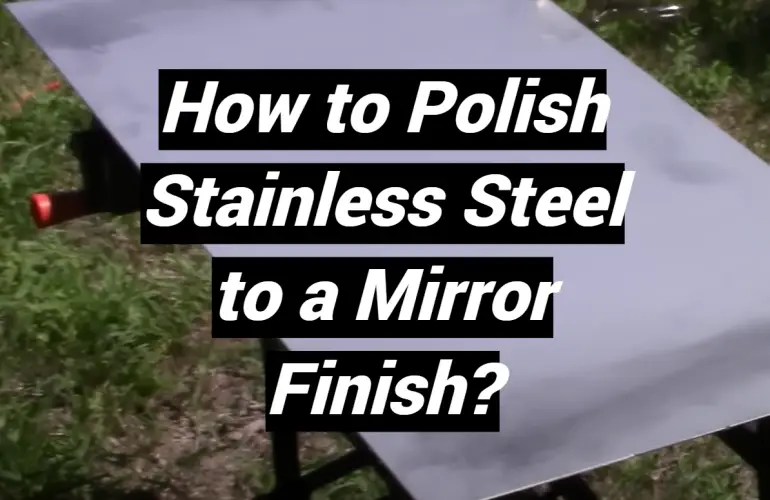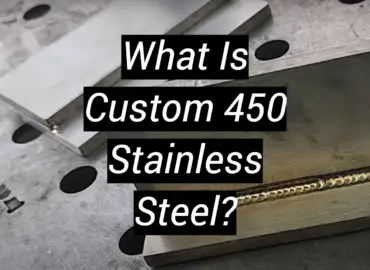Do you have stainless steel appliances or hardware that could use a little TLC? Polishing stainless steel is a great way to achieve a mirror finish and make your appliances or hardware look like new again! In this blog post, we will discuss the best methods for polishing stainless steel so that you can get the perfect finish every time. Let’s get started!
What Is Stainless Steel?
Stainless steel is an alloy of iron that contains chromium and other metals. It is extremely durable and easy to clean, making it a popular choice for appliances and cookware. Stainless steel can also be polished to a mirror-like finish, which makes it ideal for decorative applications. [1]
Benefits of Stainless Steel
Stainless steel is one of the most popular materials on the market today. Its popularity is due in large part to its many benefits. Some of the benefits of stainless steel include:
- Durable: Stainless steel is one of the most durable materials available. It can withstand exposure to high temperatures, humidity, and other elements without showing signs of wear or damage.
- Low Maintenance: Stainless steel is very easy to care for. It does not require regular cleaning or polishing like other materials do.
- Non-corrosive: Stainless steel is resistant to corrosion from water, dust, and other substances. This makes it ideal for use in areas where there is a lot of moisture or where there is a risk of corrosion from other materials.
- Attractive: Stainless steel has a bright, shiny finish that is very attractive. This finish can be maintained with minimal effort, making stainless steel an ideal choice for those who want an attractive material without the hassle of frequent maintenance.
Cons of Stainless Steel
- Expensive: Stainless steel is one of the more expensive materials on the market. This is due in part to its many benefits, but also because it is a relatively new material.
- Difficult to weld: Stainless steel can be difficult to weld because it is a very hard material. This makes it important to hire a professional welder who has experience welding stainless steel.
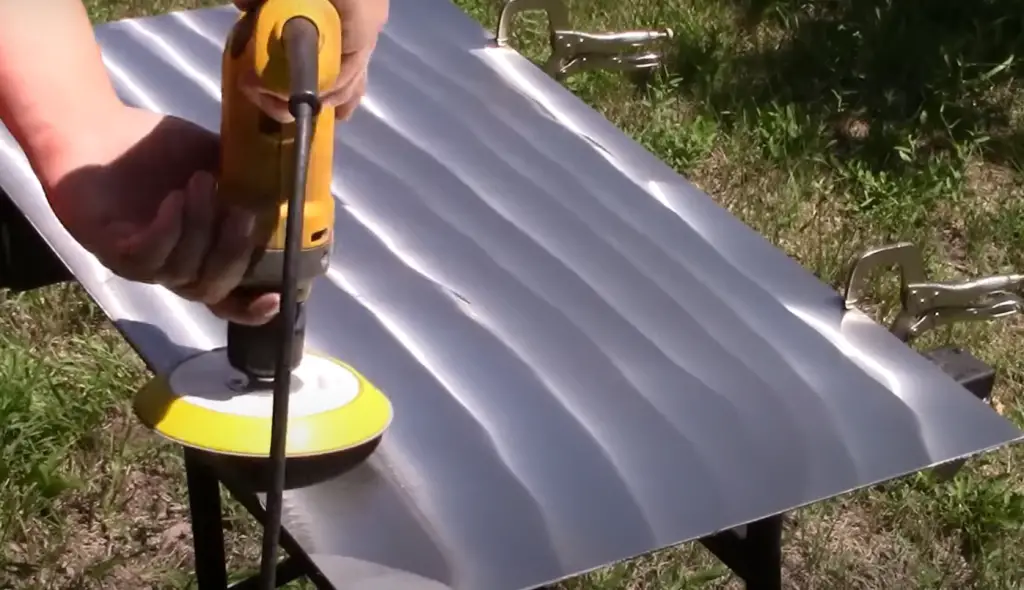
Despite its few drawbacks, stainless steel is an excellent material for many applications. If you are looking for a durable, low maintenance, and attractive material, then stainless steel may be the right choice for you.
What’s A Mirror Finish?
A mirror finish is a highly reflective surface that can be achieved by polishing the material. The polishing process removes any imperfections in the surface of the material, resulting in a smooth, glossy finish.
A true mirror finish will have no visible imperfections and will reflect light evenly across the surface. [2]Why Choose A Mirror Finish?
There are many reasons why you might choose a mirror finish for your stainless steel. Some of the most popular reasons include:
- Aesthetics: A mirror finish is very attractive and can give your stainless steel a high-end look.
- Protection: A polished surface is more resistant to corrosion and staining than a non-polished surface. This makes it a good choice for areas where there is a lot of moisture or where there is a risk of corrosion from other materials.
- Functionality: A polished surface is easier to clean and maintain than a non-polished surface. This can be important in areas where hygiene is critical, such as in kitchens and bathrooms.
How To Polish Stainless Steel To A Mirror Finish?
Step 1: Level/Remove The Weld
The first step in polishing stainless steel is to level out any welds that are present. You can do this by using a chisel or a file to grind down the welds until they are flush with the rest of the material.If there are no welds present, you can skip this step.
Step 2: Sand The Surface
Once the welds have been ground down, you will need to sand the surface of the stainless steel. This will help to create a smooth, even surface for polishing. You should use a high-grit sandpaper for this step. A good starting point is 400-grit sandpaper. If the surface is very rough, you may need to start with a lower-grit sandpaper and work your way up.
Step 3: Polish The Surface
After the surface has been sanded, you can begin polishing it. You will need to use a polishing compound and a buffing pad for this step. Apply the polishing compound to the buffing pad and then rub it onto the surface of the stainless steel in a circular motion.

Continue polishing until you have achieved the desired level of reflectivity. If you are not satisfied with the results, you can sand the surface again and start over.
Step 4: Protect The Finish
Once you have achieved the desired level of polish, it is important to protect the finish. You can do this by applying a thin layer of wax to the surface. This will help to prevent the polish from being removed by fingerprints or other contaminants.
You can also choose to seal the polished surface with a clear coat of paint or lacquer. This will provide an extra level of protection and make it easier to keep the finish looking its best. [3]
For Best Results:
To achieve the best possible results, it is important to use high-quality materials and tools. This includes using a polishing compound that is specifically designed for stainless steel. You should also use a buffing pad that is made of soft material, such as lamb’s wool.
It is also important to work in small sections and to polish in one direction only. This will help to avoid creating swirl marks in the surface of the stainless steel. Finally, be sure to protect the polished surface from fingerprints and other contaminants by applying a thin layer of wax or sealing it with a clear coat.
Buffing Tips And Tricks
- Use masking tape to protect areas that you do not want to polish. This can be helpful when polishing stainless steel in tight spaces or when you are trying to avoid polishing a specific area.
- Apply pressure evenly when buffing. Too much pressure can cause the buffing pad to become overheated and damage the surface of the stainless steel.
- Keep the buffing pad moving. Buff in one direction only and avoid going over the same area multiple times. This will help to avoid creating swirl marks.
- Work in small sections. This will help to avoid overtaxing the buffing pad and causing it to become overheated.
- Polish with a light touch. The goal is to remove the imperfections from the surface of the stainless steel, not to remove material.
- Be patient.Polishing stainless steel can be a time-consuming process. However, taking your time will result in a better finish.
How to Machine Polish Stainless Steel?
Machine polishing is the process of using a machine to apply abrasive compounds and buffing pads to the surface of stainless steel. This method is typically used to achieve a high level of shine and reflectivity.
Machine polishing can be done by hand or with the use of a power drill.
Apply the polishing compound to the buffing pad and then rub it onto the surface of the stainless steel in a circular motion.If you are using a power drill, you will need to attach a buffing pad to the end of the drill bit. Apply pressure evenly as you polish the surface of the stainless steel. Be sure to keep the buffing pad moving to avoid creating swirl marks.
Machine polishing is a quick and easy way to achieve a high level of shine on stainless steel. However, it is important to be careful not to apply too much pressure. This can cause the buffing pad to become overheated and damage the surface of the stainless steel. [4]
How to Clean Stainless Steel?
Assuming you’re starting with a clean surface, the first step is to choose the right cleaner. A lot of people think that any all-purpose cleaner will do the trick, but this simply isn’t true. You need to be careful about the cleaners you use on stainless steel because some of them can actually damage the finish.
The best way to clean stainless steel is with a product that’s specifically designed for it. These products are usually called “stainless steel cleaners” or “stainless steel polish.” There are a number of brands on the market, so you should be able to find one that’s right for your needs.

Once you’ve got your cleaner, it’s time to start cleaning. Make sure you read the instructions on the product you’re using so that you don’t damage the finish. In general, you’ll want to apply the cleaner to a soft cloth and then wipe it in a circular motion across the surface of the stainless steel.
If you’re dealing with a particularly stubborn stain, you may need to use a little elbow grease.
Once you’ve cleaned the entire surface, it’s time to polish it. This will help give it a nice shine and make it look like new again. Again, there are a number of different products on the market specifically designed for polishing stainless steel. Just choose one that’s right for your needs and follow the instructions on the package.
After you’ve polished the stainless steel, you should be able to see your reflection in it. If not, don’t worry. Just keep polishing until you achieve the desired results. [5]
FAQ
Can you get a mirror finish on stainless steel?
Yes, you can get a mirror finish on stainless steel. There are various ways to do this, but the most common way is to use a polishing compound and a buffing wheel.
What is the best way to polish stainless steel?
There is no definitive answer to this question as there are several different ways to polish stainless steel, and each method may produce slightly different results.
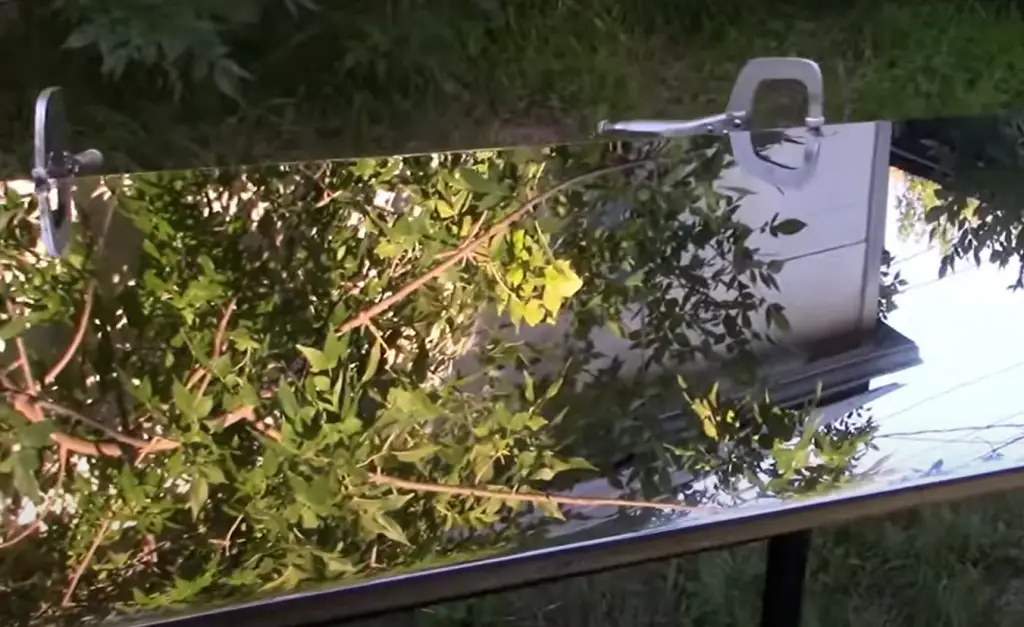
Some of the most common methods include using a polishing compound and buffing wheel, sanding with progressively finer grit sandpaper, or using a commercial polishing kit.
How do you remove scratches from stainless steel?
There are several ways that you can remove scratches from stainless steel. If the scratch is shallow, you may be able to remove it with a polishing compound and buffing wheel. If the scratch is deeper, you may need to sand it out with progressively finer grit sandpaper. For very deep or stubborn scratches, you may need to use a commercial polishing kit.
How do you clean stainless steel?
There are several ways that you can clean stainless steel. You can use a mild soap and water solution, white vinegar, or rubbing alcohol. For more difficult stains, you may need to use a commercial cleaner specifically designed for stainless steel.
What are the benefits of polished stainless steel?
Polished stainless steel has a number of benefits. It is highly resistant to corrosion and scratching, and it is also easy to clean. Polished stainless steel also has a very high aesthetic appeal and can be used in a variety of settings.
What are the drawbacks of polished stainless steel?
There are a few potential drawbacks to polished stainless steel. It is possible to over-polish stainless steel, which can give it a cloudy appearance. Polished stainless steel may also show fingerprints and smudges more easily than other finishes.
How do I care for my polished stainless steel?
Clean it with a soft, damp cloth and mild dish soap. If there are stubborn stains or water spots, use a small amount of vinegar on a clean cloth. Wipe in the direction of the grain to avoid scratching. To keep your stainless steel looking like new, avoid using harsh cleaners and abrasives. Over time, these can damage the protective coating on the steel and cause it to lose its luster.
How do you make stainless steel shine like chrome?
To polish your stainless steel to a high shine, first clean it with a soft cloth and mild dish soap. If there are stubborn stains or water spots, use a small amount of vinegar on a clean cloth. Wipe in the direction of the grain to avoid scratching. Next, buff the steel with a dryer sheet to give it a nice sheen. For an even higher shine, use a chrome polish specifically designed for stainless steel. Apply the polish with a soft cloth and buff in small circles until you achieve the desired results.
What is the best polish for stainless steel?
There are several polishes on the market that are specifically designed for stainless steel. We recommend using a chrome polish, as it will give your stainless steel a nice sheen. Apply the polish with a soft cloth and buff in small circles until you achieve the desired results.
What should you not use on stainless steel?
Stainless steel is a beautiful material that can be found in many different applications, from appliances to jewelry. However, it can be difficult to keep stainless steel looking like new. It is important to avoid using certain cleaning products on stainless steel as they can damage the finish:
- Chlorine bleach
- Abrasive cleaners
- Ammonia-based cleaners
- Vinegar or other acidic cleaners
- Harsh detergents
- Steel wool or other abrasive pads
- Wire brushes
- Oven cleaner (spray or liquid)
Does WD-40 shine in stainless steel?
Yes, WD-40 can be used to shine and protect stainless steel. This is because WD-40 is a multi-purpose product that can be used for many different things, including cleaning and protecting metal surfaces.
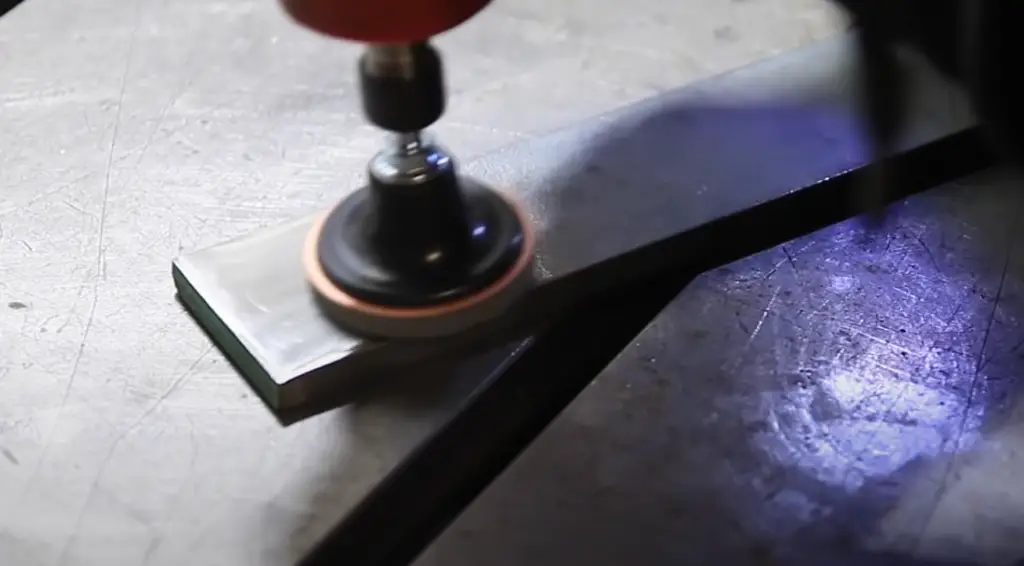
In addition to shining stainless steel, WD-40 can also help to remove fingerprints, water spots, and other marks from the surface.
Does vinegar make stainless steel shiny?
Yes, vinegar can make stainless steel shiny. You can use either white vinegar or apple cider vinegar. Just pour either type of vinegar into a spray bottle and spritz it onto your stainless steel. Then, wipe the surface with a clean cloth to remove any residue. Your stainless steel will be left with a beautiful shine!
Does rubbing alcohol shine stainless steel?
Yes, rubbing alcohol will remove fingerprints and smudges from stainless steel. To clean, simply apply the rubbing alcohol to a soft, lint-free cloth and wipe the surface of the stainless steel.
You can also use a mild soap and water solution to clean your stainless steel appliances. Make sure to dry the surface off with a clean towel afterwards to avoid water spots.
If you’re looking for a more natural cleaning solution, white vinegar also works well on stainless steel. Once you’ve cleaned the surface of your stainless steel, it’s time to start polishing. You’ll need a polishing cloth or pad, as well as a non-abrasive polish specifically designed for use on stainless steel.
How do you get streak free stainless steel shine?
You can achieve this by polishing your stainless steel with the following steps.
- Clean the surface of your stainless steel. Use a mild soap and water solution, or a glass cleaner for best results.
- Dry the surface thoroughly to prevent water spots.
- Apply a small amount of polish to a clean, soft cloth. Rub the polish into the surface of the stainless steel in a circular motion.
- Wipe away any excess polish with a clean, dry cloth.
- Repeat steps 3 and 4 until you achieve the desired level of shine.
With these simple steps, you can easily polish your stainless steel and achieve a streak free shine!
Useful Video: How to Sand And Polish Stainless Steel to Mirror Finish
Conclusion
Achieving a mirror finish on stainless steel can be difficult, but it is possible with the right tools and techniques. In this article, we have provided a step-by-step guide on how to polish stainless steel to a mirror finish. We hope that you found this guide helpful and that you are now able to achieve the desired results. Thanks for reading!
References:
- https://www.unifiedalloys.com/blog/what-is-stainless-steel
- https://www.nortonabrasives.com/en-gb/resources/expertise/how-achieve-mirror-finish-stainless-steel
- https://www.empireabrasives.com/blog/buff-polish-stainless-steel-beginners-guide/
- https://www.wikihow.com/Polish-Stainless-Steel
- https://www.hgtv.com/lifestyle/clean-and-organize/how-to-clean-stainless-steel

